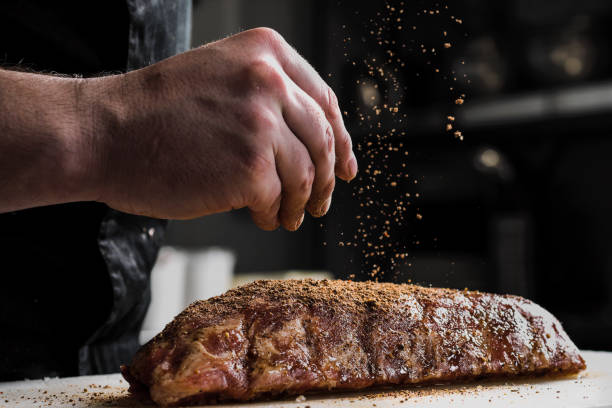The world of grilling and cooking steak is filled with myths and misconceptions that have been passed down through generations. In this article, we will debunk eight of the most stubborn myths about grilling and cooking steak, providing you with scientific explanations and practical insights to help you achieve the perfect steak every time.
Myth #1: “You should let a thick steak rest at room temperature before you cook it.”
The Theory: Allowing a steak to come to room temperature before cooking it promotes even cooking and better browning.
The Reality: Letting a steak rest at room temperature accomplishes almost nothing in terms of raising its internal temperature. It takes a very long time to reach room temperature, and the minor temperature increase doesn’t significantly affect the cooking process. Dry your steak thoroughly with paper towels instead for better browning.
Myth #2: “Sear your meat over high heat to lock in juices.”
The Theory: Searing forms an impenetrable barrier, retaining juices within the meat.
The Reality: Searing does not create a barrier. In fact, multiple flipping while cooking can make the steak cook faster and more evenly, resulting in a juicier finished product.
Myth #3: “Bone-in steak has more flavor than boneless.”
The Theory: Cooking with the bone in transfers flavor from the bone to the meat.
The Reality: There’s no exchange of flavor between the bone and meat. However, cooking with the bone in can provide insulation, preventing overcooking and enhancing flavor in some parts of the steak.
Myth #4: “Only flip your steak once!”
The Theory: Flipping a steak multiple times will ruin it.
The Reality: Frequent flipping can lead to faster and more even cooking, resulting in a juicier steak. It also minimizes curling and cupping issues when fat and connective tissue shrink unevenly.
Myth #5: “Don’t season your steak until after it’s cooked!”
The Theory: Salting a steak early can dry it out.
The Reality: Salting your steak well in advance (45 minutes to a couple of days) helps season it deeply and evenly. It also aids in developing a better crust. Avoid salting right before cooking as it can lead to surface moisture that inhibits browning.
Myth #6: “Don’t use a fork to turn your steak.”
The Theory: Poking a steak with a fork will make it lose juices.
The Reality: Poking a steak with a fork doesn’t cause significant juice loss. It’s a safe method for turning your steak if you don’t have tongs or a spatula handy.
Myth #7: “If you cut it open to check doneness, it will lose all its juices.”
The Theory: Cutting a steak to check its doneness results in a significant loss of juices.
The Reality: A small cut to check doneness has a negligible impact on juice loss. However, it can be challenging to gauge doneness accurately by sight alone.
Myth #8: “Use the ‘poke test’ to check if your steak is done.”
The Theory: Experienced cooks can determine doneness by poking the steak with their finger.
The Reality: The “poke test” is unreliable due to variations in hand squishiness and meat type. Using an instant-read thermometer is the most accurate way to ensure perfectly cooked steak every time.
By dispelling these common myths about grilling and cooking steak, you can enhance your steak-cooking skills and achieve consistently delicious results. Remember to rely on science and practical techniques to create the perfect steak, whether you’re cooking it on the grill or in a pan.
